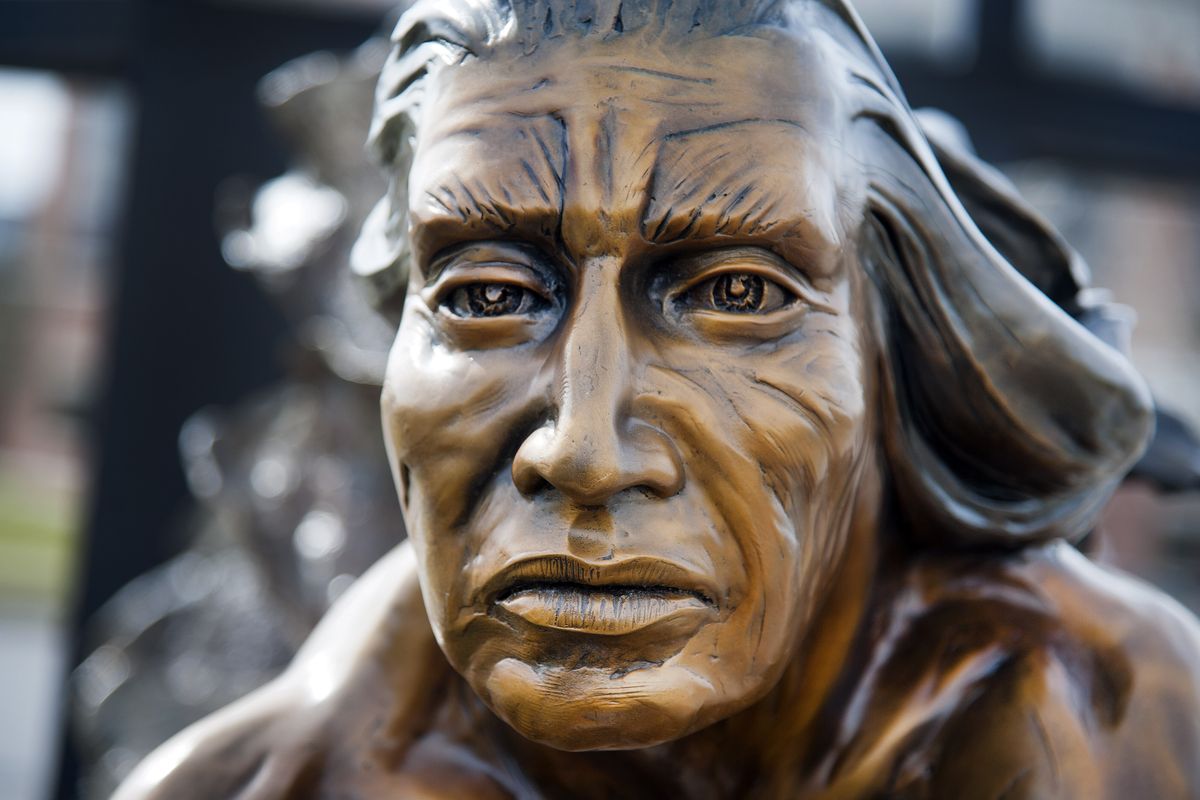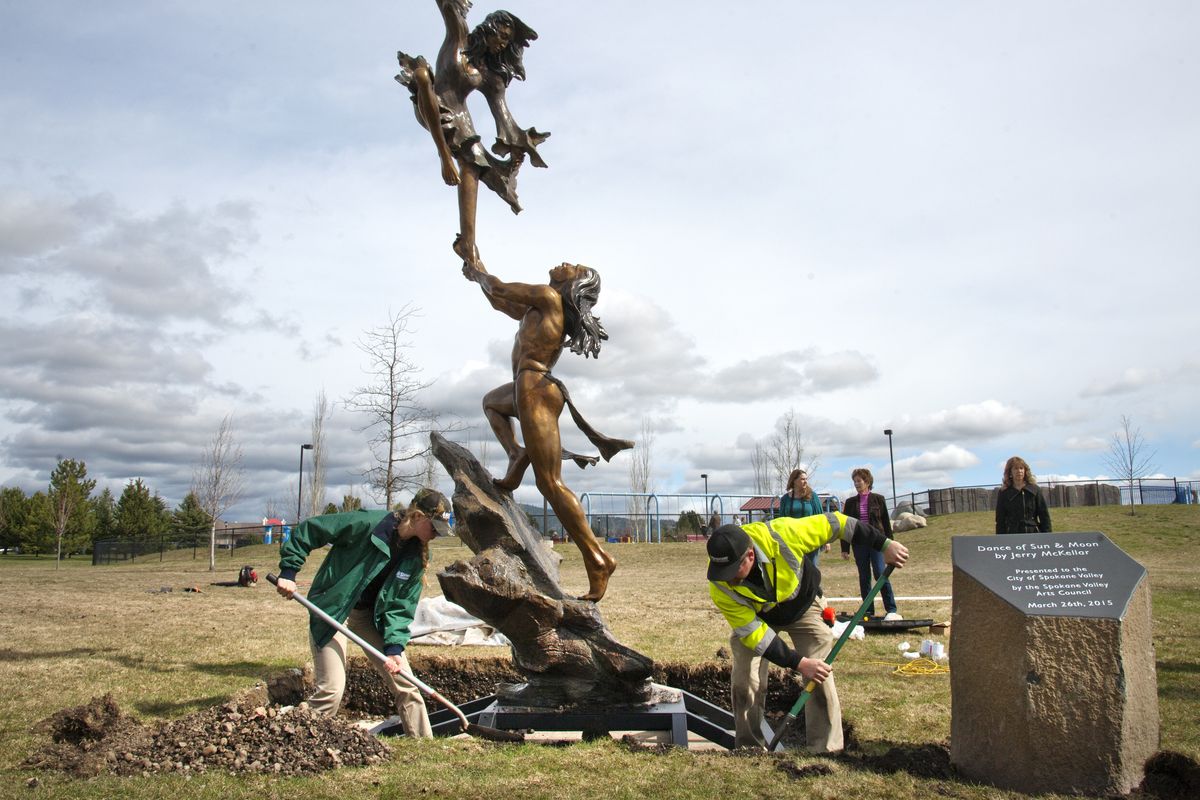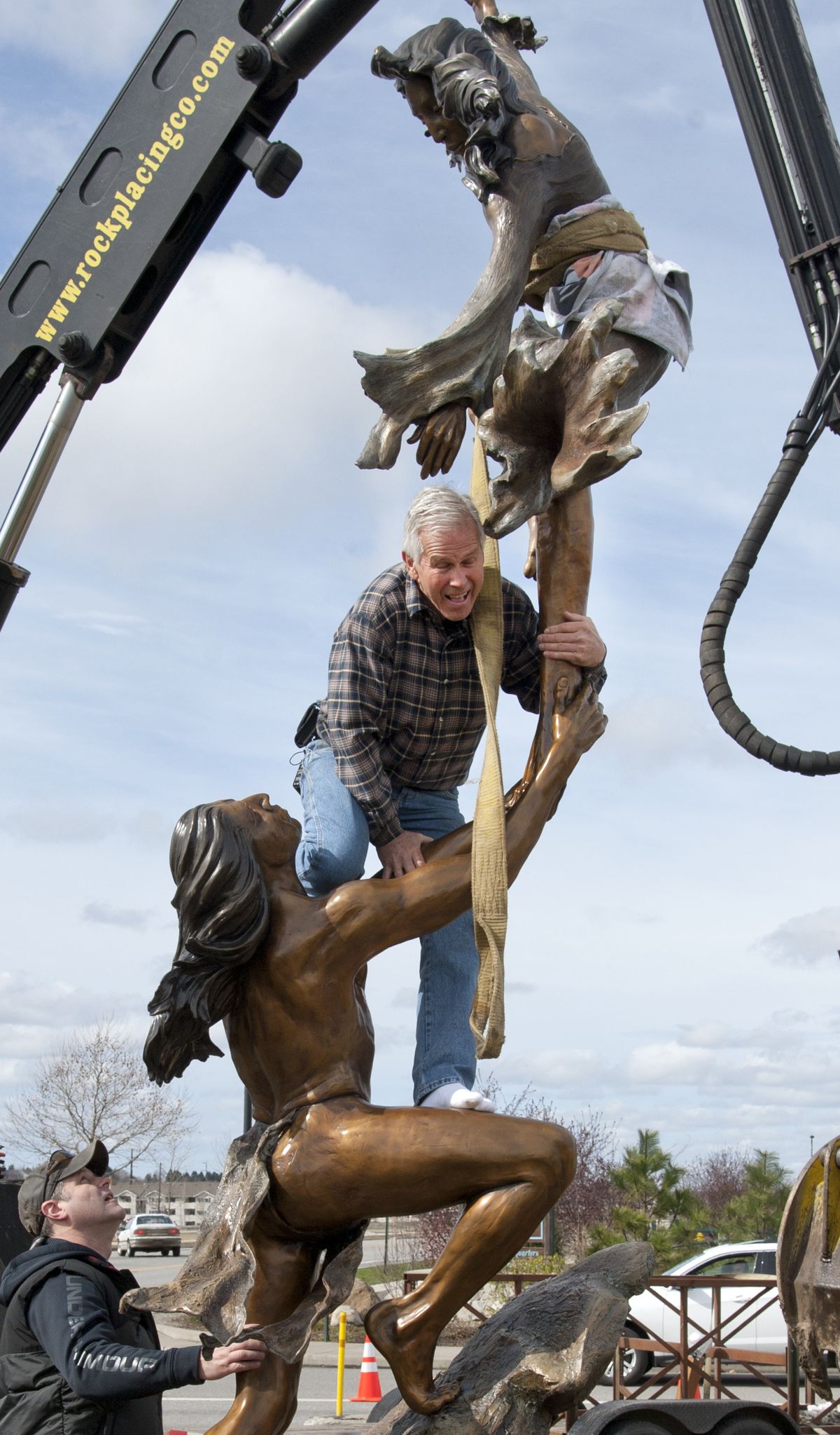An artist’s dance to display his work
‘Dance of Sun & Moon’ by Jerry McKellar placed in Valley park
Artist Jerry McKellar, right, gets help from Joe Kronenberg installing his “Dance of Sun & Moon” sculpture Thursday. See a Big Picture Gallery at www.spokesman.com. (Dan Pelle)Buy a print of this photo
Workers installed a tall bronze statue Thursday in Spokane Valley – the latest display of public art for the community.
Called “Dance of Sun & Moon,” the 16-foot-tall bronze was created by artist Jerry McKellar and can be viewed in Mirabeau Point Park. It was donated to the public by the Spokane Valley Arts Council.
Workers moved the statue to its new home Thursday after a rather unceremonious start to the day: it had been run through a self-service car wash and then wrapped in tarps to be hauled from McKellar’s studio in Colville.
“Running it through the automatic would have been three bucks more,” McKellar joked.
A crane truck donated by Rock Placing Co. was called in to gently maneuver the one-ton statue onto a cement pad prepared by Spokane Valley Parks and Recreation staff.
Parks director Mike Stone was a little worried as the truck backed onto heavy rubber mats placed to protect the soggy lawn.
“If we have to fix it, we will fix it,” Stone said, but the truck barely left an impression.“Sometimes I just can’t bear to watch it,” said Gayle McKellar, the artist’s wife, while shooting pictures of the crane lifting the bronze.
Jerry McKellar was near the statue the whole time, yelling instructions at the crane operator as he inched the statue to the base.
In less than 30 minutes the statue was vertical in its permanent location, and a beaming McKellar kicked off his tennis shoes and climbed up on the statue to untie the loading strap.
“This is a great spot. It just looks awesome,” said James Harken, president of the Arts Council. “That’s a really nice piece.”
“Dance of Sun & Moon” is based on the Plains Indian legend of the sun and moon that live together, but only meet briefly twice a day when the one returns and the other leaves.
Harken declined to diclose how much the council had paid for the statue. But he said McKellar bronzes of this size sell for more than $100,000.
“Dance of Sun & Moon” sits near another bronze called “Working the Line,” which also was made by McKellar and donated to the city by the arts council in 2009.
Harken knows McKellar from the dentistry business.
McKellar had a practice in Colville until he turned 50 in 1994.
“That’s when I quit and turned my hobby into my job,” McKellar said.
In his dentistry days, McKellar made jewelry as a side business, but he always dreamt that he could make a living as a sculptor.
“It’s a little scary to make the transition,” McKellar said, “but it’s worked out better than we thought.”


